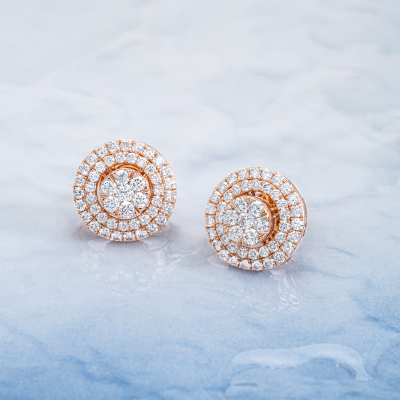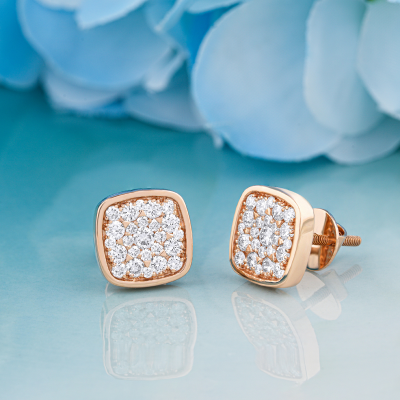Carat Weight Of Lab Grown Diamonds: Does It Matter?
Lab grown diamonds have revolutionized the jewellery business, by providing a sustainable and ethically sourced alternative to naturally mined diamonds. Among the many factors that contribute to the allure of these diamonds, carat weight holds a prominent place. When it comes to diamonds, they play a significant role in determining the size and visual impact of the gem.
Carat weight has always been associated with wealth and prestige, conjuring up ideas of grandeur and splendor. It has more meaning than just its relationship to size, though. The ultimate value of a diamond resides in the harmonic interaction between carat weight and other quality characteristics, such as cut, color, and clarity, even if a higher carat weight typically equates to a bigger physical size.
Moreover, lab diamonds have drawn consumers’ attention as technology progresses because they provide a responsible alternative without sacrificing beauty or quality. For anyone looking to make an informed and confident purchase, understanding the relationship between carat weight and diamond size is essential. Whether you’re a diamond enthusiast or a curious shopper, in this blog, we will explore how carat weight affects the size, appearance, and value of lab grown diamonds.
Carat Weight On Lab Grown Diamonds: Size, Visual Impact, And Value
By understanding how carat weight influences diamond sizes, visual impact, size perception, and considering the broader aspects that contribute to a lab grown diamond’s value, individuals can make informed decisions when selecting their ideal gem. They provide a wide range of solutions to suit various preferences, styles, and budgets thanks to the interaction between carat weight, visual impact, size perception, and other quality parameters.
Carat Weight and Diamond Sizes: The term carat weight refers to the weight of a diamond and has a direct bearing on the its size. Simply said, the size of the diamond grows as the carat weight does. It’s crucial to remember that the diamond’s real physical dimensions are not determined by its carat weight alone. The distribution of the carat weight and how it appears to the unaided eye are both greatly influenced by the shape and cut of the diamond.
Visual Impact and Presence: The carat weight of a lab grown diamond affects how noticeable it is. Larger carat weights typically stand out more on the finger or in the jewellery piece. They draw interest and can produce a statement-making aesthetic. When choosing the carat weight, it is crucial to take into account lifestyle choices and personal tastes. Some people could want a more understated and delicate aesthetic, while others would prefer a bright and striking exhibition.
Size Perception and Cut: A lab grown diamond’s appearance in terms of size is honorably influenced by its cut. A well-cut diamond enhances its brilliance and shine, giving the impression that it weighs more than it actually does. A badly cut diamond, on the other hand, may forfeit the perception of size since the weight may be concealed in places where it doesn’t enhance the stone’s overall beauty. To maximize its size and sparkle, it must be well-cut.
Considerations Beyond Carat Weight: While carat weight plays a significant role in establishing a diamond’s size, it is not the only determinant of its worth or beauty. The specific qualities of a diamond, such as color, clarity, and cut, have a big impact on how it looks and how much it is worth. A smaller diamond with superior color, clarity, and cut qualities can outperform a larger size with subpar qualities.
Affordability and Carat Weight: When compared to natural diamonds, one of the major benefits of lab grown diamonds is their affordability. Buyers can frequently find greater carat weights of lab diamonds at more cost-effective price points, enabling them to obtain their desired size without going over their budget. When looking for a larger size within a specified price range, these diamonds may be an interesting alternative.
Carat Weight Considerations for Center Stone Selection
The ideal carat weight for the center stone in an engagement ring depends on a number of factors, including the wearer’s preferences, finger size, financial constraints, size perception, and symbolic value. The required carat weight depends on the wearer’s own lifestyle preferences and choices. The proportions of the finger have an impact on how the hand looks when a given carat weight is used.
Budget considerations make sure that the selected carat weight is within reach. The diamond’s cut affects how people perceive size and can enhance the visual effect. Last but not least, the engagement ring gains a personal touch because of the symbolic meaning associated with the diamond weight. By balancing these variables, the appropriate carat weight is reached, which reflects individual preferences, improves the beauty, is within the couple’s price range, and has a unique significance.
Lab grown diamond engagement rings are deeply personal, and selecting the right size involves considering confidential style, lifestyle, and budget to ensure the ring that brings joy and represents the love and commitment being celebrated.
Conclusion
Carat weight is a crucial factor in lab grown diamonds as it has a significant impact on the size, aesthetic impact, and value. To determine a diamond’s overall attractiveness, it is important to take into account other quality traits including cut, color, and clarity. A more cost-effective and environmentally friendly solution, lab created diamonds offer a variety of choices to suit different tastes and budgets. Consumers can make decisions that suit their style and beliefs by comprehending the relationship between carat weight and diamond size.










